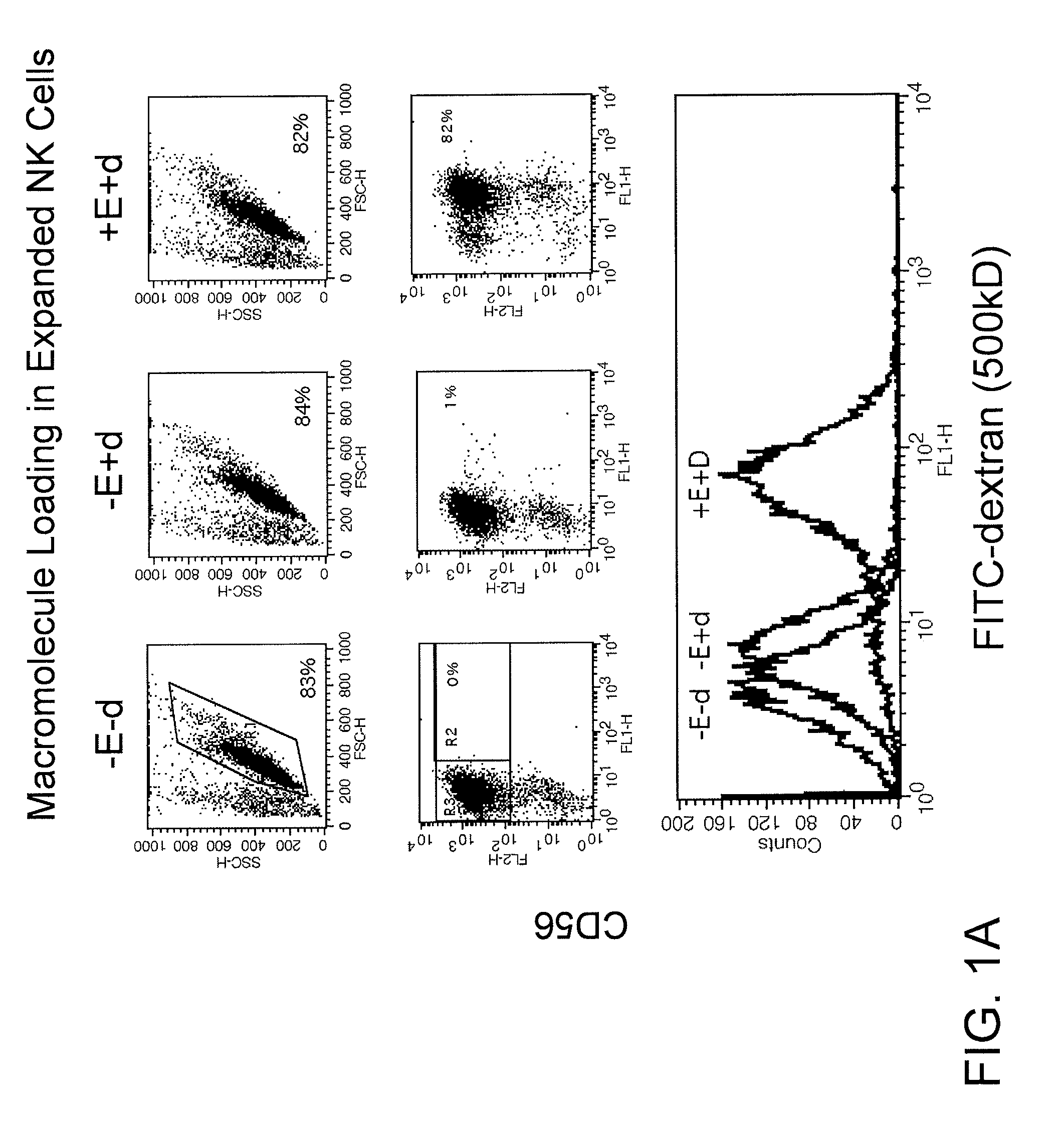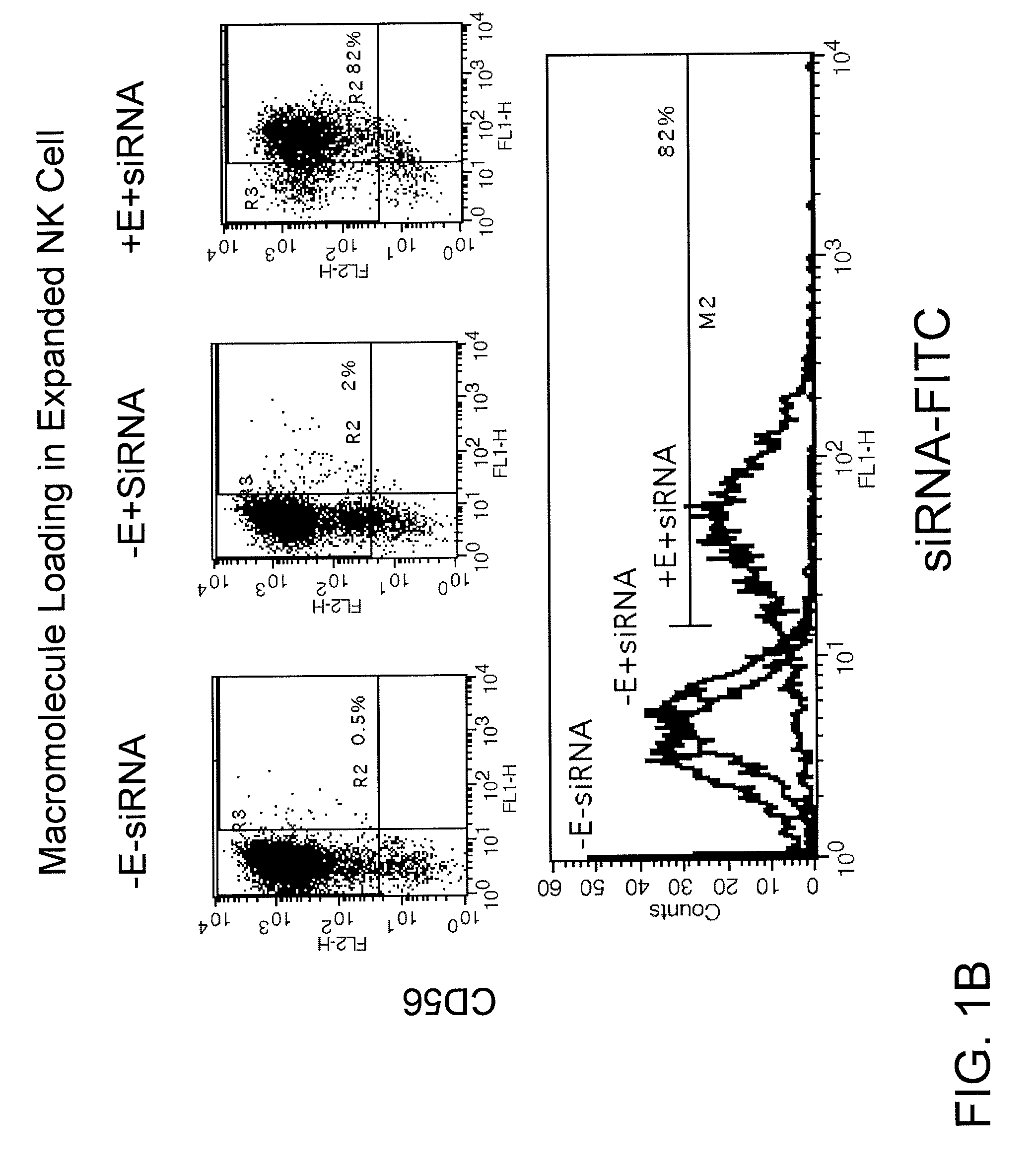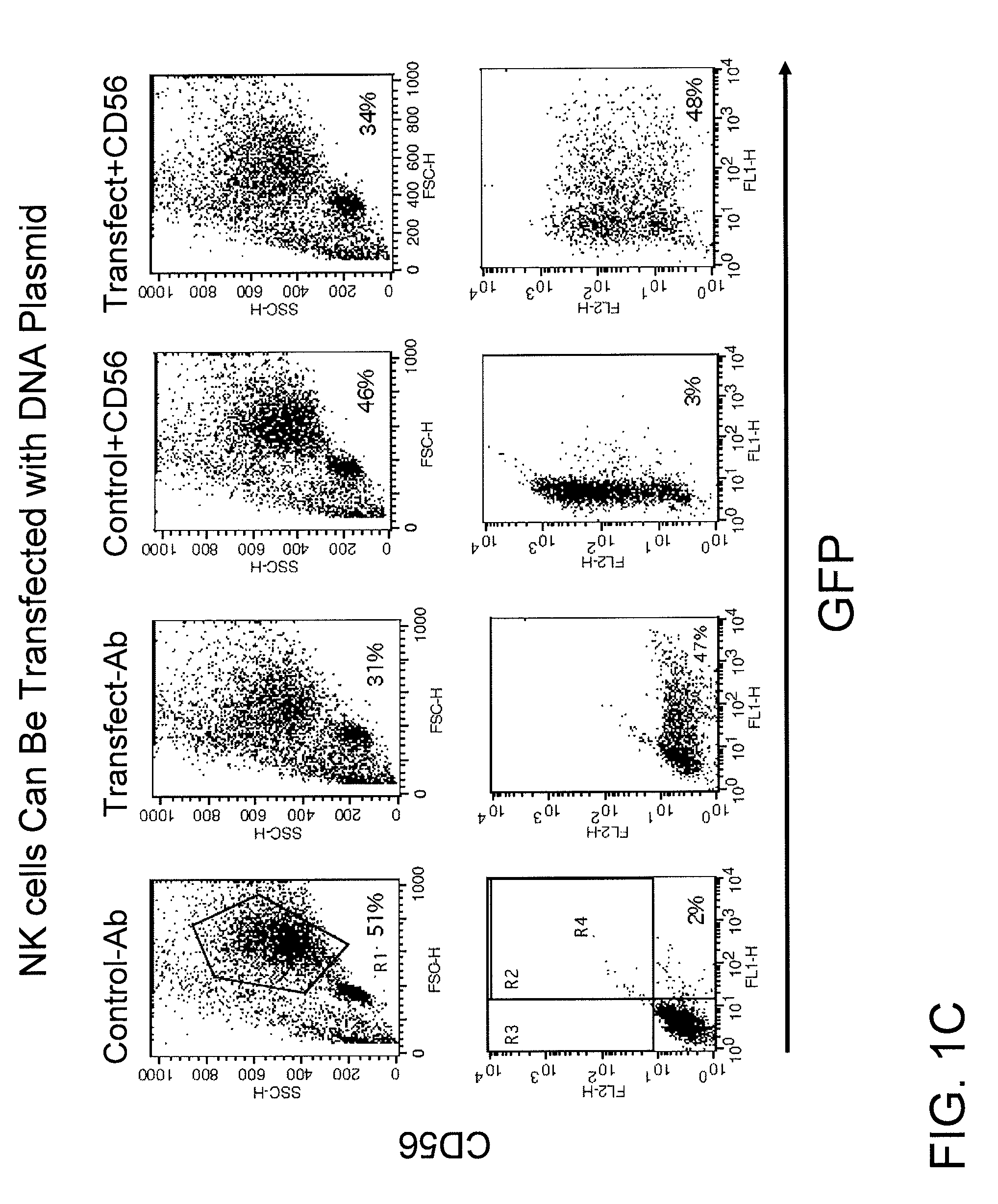Engineering and delivery of therapeutic compositions of freshly isolated cells
a technology of freshly isolated cells and therapeutic compositions, applied in the field of cell biology, cancer biology, immunology, can solve the problems of cell toxicity to resting hematopoietic cells including lymphocytes, dendritic cells, transient dna transfection would not provide for clinically useful preparation of transiently modified resting nk and t cells, and achieve the effect of simplifying the procedure of obtaining and enhancing biological activity of pbmc cell populations
- Summary
- Abstract
- Description
- Claims
- Application Information
AI Technical Summary
Benefits of technology
Problems solved by technology
Method used
Image
Examples
example 1
Electroloading of NK Cells with a DNA Plasmid Encoding a Marker Gene
[0084]NK cells were transfected using electroporation with a DNA plasmid carrying an eGFP marker gene. One day after transfection, the viable and transfected NK cells were assayed and found to be about 50% and 30% respectively, as shown in FIG. 1C. When normalized to untransfected control cells, the viability of transfected NK cells using this plasmid DNA was about 60%. Approximately 50% of the viable NK cells expressed the eGFP marker gene. No significant change in phenotype was observed. Even though NK cells could be transfected well 1 day post transfection, the transfected NK cells lost their proliferation ability and viability because of DNA-uptake mediated cytotoxicity. DNA transfection of NK cells, therefore, would not result in meaningful clinical application.
example 2
Electroloading of Expanded NK Cells with mRNA Coding for a Marker Gene
[0085]As shown in FIG. 1D, mRNA coding for eGFP was electrotransfected into expanded NK cells. About 80% of the viable cells expressed GFP. At the same time, the viability of NK cells was 67% in the untransfected control and 60% in the transfected cells. When normalized to the untransfected control cells, the viability of the transfected cells was 90%. The mRNA-transfected cells exhibited a reduced rate of cell division for one day post-transfection, but they regained the normal cell division rate subsequently. The transfected NK cells maintained approximately half of the cell number relative to control untransfected cells 4 days post-transfection (FIG. 1E).
example 3
Electroloading of Expanded NK Cells with mRNA Coding for a Chimeric Receptor
[0086]An mRNA coding for an anti-CD19 chimeric receptor was loaded into NK cells by electroloading. As shown in FIG. 2A, 65% of all the viable cells expressed the anti-CD19 chimeric receptor as analyzed by flow cytometry one day post-transfection. The expression of the anti-CD19 chimeric receptor increased with the increase of mRNA concentration used in the electroloading. Using an mRNA concentration of 200 μg / ml, expression of anti-CD19 chimeric receptor was observed for 4 days following electroloading (FIG. 2B). Recovery of the anti-CD19 chimeric receptor-modified NK cells was similar to that of cells electrotransfected with an mRNA coding for the marker gene eGFP.
PUM
| Property | Measurement | Unit |
|---|---|---|
| time | aaaaa | aaaaa |
| time | aaaaa | aaaaa |
| time | aaaaa | aaaaa |
Abstract
Description
Claims
Application Information
 Login to View More
Login to View More - R&D
- Intellectual Property
- Life Sciences
- Materials
- Tech Scout
- Unparalleled Data Quality
- Higher Quality Content
- 60% Fewer Hallucinations
Browse by: Latest US Patents, China's latest patents, Technical Efficacy Thesaurus, Application Domain, Technology Topic, Popular Technical Reports.
© 2025 PatSnap. All rights reserved.Legal|Privacy policy|Modern Slavery Act Transparency Statement|Sitemap|About US| Contact US: help@patsnap.com



